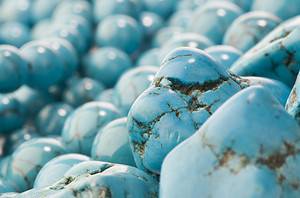When choosing the right gutter material for your home, copper is an elegant and durable option. Its timeless appeal and longevity make it a popular choice among homeowners. However, there are several reasons why you might want to think twice before proceeding with your installation. Discover five reasons you should avoid installing copper gutters. From cost considerations to maintenance requirements, explore the potential drawbacks that come with this otherwise elegant choice.
1. High Cost
One of the most significant deterrents for many homeowners considering copper gutters is the price tag. Copper is one of the most expensive materials for gutter systems. While the initial investment may provide a touch of luxury and elegance to your home’s exterior, it can be a substantial hit to your wallet.
Compared to more budget-friendly options like aluminum or vinyl, copper gutters can cost several times more for materials and installation. The material is heavy, and if you have a large roofline or two-story home, labor costs can skyrocket. Therefore, if you are working with a tight budget, the high cost of copper gutters may be a significant reason to reconsider your choice.
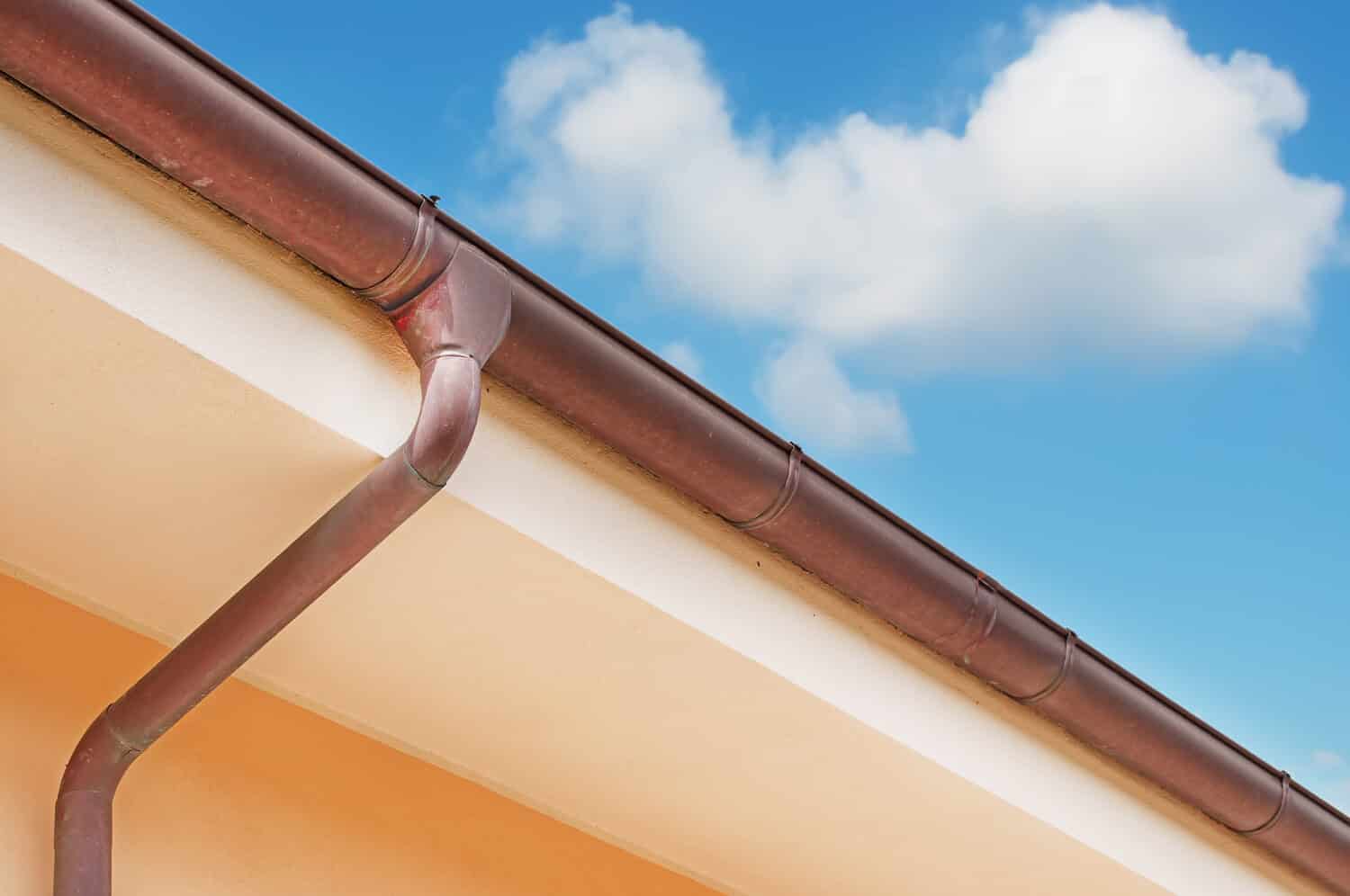
Copper gutters weigh up to 1.5 pounds per foot.
©Hibiscus81/Shutterstock.com
2. Patina
Copper gutters have a unique aesthetic appeal that draws many homeowners in. However, copper starts with a bright, shiny appearance that gradually weathers and develops a patina. This patina transforms the copper’s color into various shades of green or brown, depending on environmental conditions.
For those who appreciate the natural aging process, the patina can be an attractive feature. However, it is essential to understand that the patina development is not uniform and can take years to achieve your desired look. During this transition, your gutters will have a patchy appearance, which might not align with your home’s aesthetic vision.
If you are seeking a consistent look for your gutter or a modern aesthetic, copper’s patina development can be a drawback. Additionally, if you are not fond of the greenish or brownish hues associated with copper’s patina, this natural transformation might be a reason to avoid the material altogether.
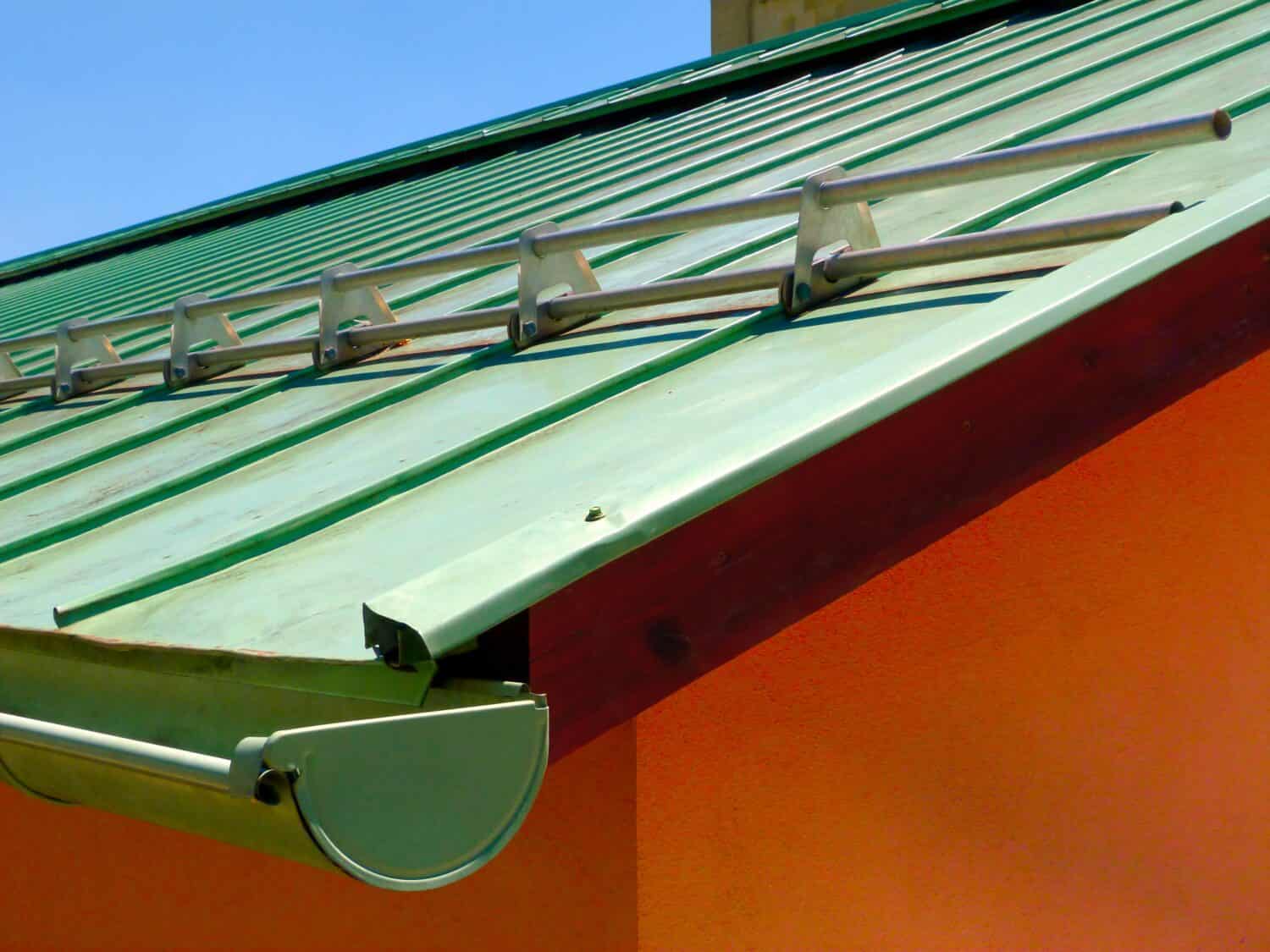
It takes between 5 to 30 years for patina to develop.
©Blue Corner Studio/Shutterstock.com
3. High-Maintenance
Copper gutters demand a level of care and attention that does not suit every homeowner. Unlike some gutter materials that require minimal maintenance, copper gutters need regular upkeep to preserve their functionality and visual appeal.
The primary maintenance concern is preventing and managing the development of the patina. Periodic cleanings and treatment are necessary to slow down the patina’s formation. Furthermore, neglecting routine maintenance can cause uneven and unattractive patina patterns, potentially detracting from your home’s curb appeal.
Lastly, you also need to address other maintenance concerns that come with metal gutters, like dents, scratches, or repairs. If you are seeking a low-maintenance gutter option, copper is not the material for you.
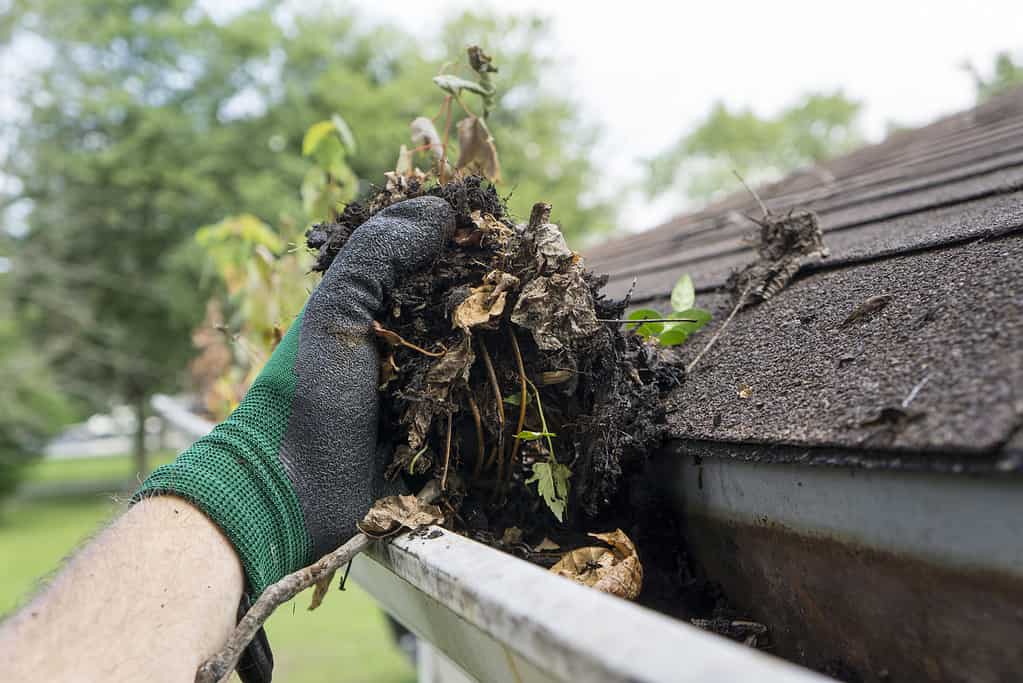
Experts recommend cleaning your gutters annually every spring.
©iStock.com/IndyEdge
4. Compatibility Issues
Copper gutters are not compatible with every roofing material on the market, and galvanic reactions are a concern, especially if your home has a metal roof or siding. A galvanic reaction occurs when dissimilar metals come into contact with each other and create an electrochemical reaction.
Copper is more corrosion-resistant than many other metals commonly used in construction. However, it triggers galvanic corrosion when it comes into contact with metals like aluminum or steel. This reaction speeds up the deterioration of both your roof and gutters, reducing their lifespans.
To avoid galvanic reactions, special measures such as using isolation materials or ensuring proper separation between dissimilar metals are required when installing copper gutters. Failing to address this issue results in premature gutter failure and potentially costly gutter or roof repairs or replacements.
If your home has a roof or gutter system made of different metals, or if you plan to mix metals in your home improvement projects, the potential for galvanic reactions is a valid reason to reconsider copper gutters.

Galvanic corrosion happens within a couple of months in unfavorable conditions.
©David Papazian/Shutterstock.com
5. Installation Complexity
Installing copper gutters is a specialized task that requires professional installation. Unlike some gutter materials like vinyl, which is more lightweight and forgiving, copper is heavy and demands precision and expertise. Factors affecting installation complexity include:
- Weight: Like galvanized steel, copper gutters are heavier than other materials, which makes handling and securing them more challenging. Their weight also increases labor costs.
- Soldering: Joining copper gutter sections requires soldering. Improper soldering can lead to leaks and other issues.
- Expansion and contraction: Metals expand and contract with temperature changes. Installers must account for thermal reactivity to prevent damage or detachment. However, copper has a lower thermal expansion coefficient than other metals, so it withstands expansion and contraction better, increasing its lifespan.
- Seamless vs. sectional: Seamless copper gutters provide better curb appeal and function, but creating seamless sections is more complex and time-consuming. Seamless gutters are more expensive and leak-proof than traditional sectional gutters.
- Customization: Copper gutters often require customization to fit your home’s unique dimensions and architectural features. This adds to the complexity and cost of your installation process.
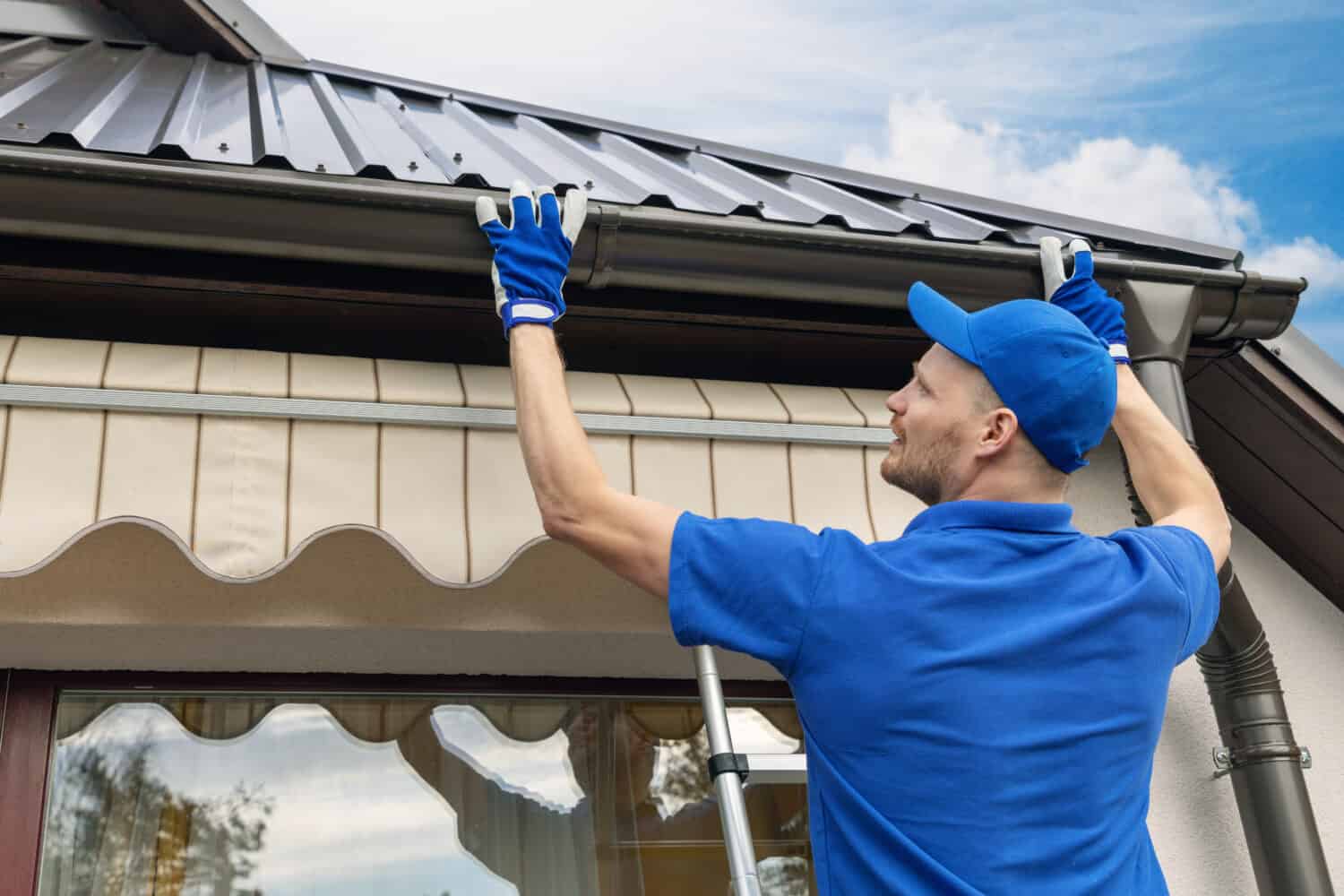
Labor makes up approximately 60% of your total installation cost.
©ronstik/Shutterstock.com
Copper Gutter Alternatives
While copper gutters offer a traditional and appealing aesthetic and other advantages like longevity, there are several reasons to avoid installing them. From their steep upfront cost and maintenance requirements to galvanic reactivity, it is essential to weigh the pros and cons and consider alternative solutions.
If you are considering alternatives to copper gutters, there are several materials to choose from, including:
- Aluminum is a popular choice because it is lightweight, durable, and corrosion-resistant. It is affordable and paintable, making it versatile for different home styles and budgets. However, like copper, aluminum is prone to galvanic reactions with metal roofs and siding.
- Vinyl gutters are affordable and low-maintenance. They are easy to install and come in various colors, but they may not be as durable as some other materials, particularly in extreme weather.
- Steel gutters, especially galvanized or stainless steel, offer excellent durability like copper gutters without the patina. They are strong enough to withstand harsh weather and are resistant to rust. However, they are costly and prone to galvanic reactions.
- Zinc gutters, like copper, develop a natural patina over time, which can provide a unique appearance. They are durable and have a long lifespan, but can be costly and prone to reactivity.
- Plastic gutters, or PVC gutters, are budget-friendly and easy to install. They are lightweight and come in various colors. However, they may not be as durable as metal options and can become brittle over time in extreme weather.
It does not matter if you are choosing copper gutters or an alternative material. Consider factors such as your budget, local climate, home style, and your maintenance preferences. Each material has its strengths and weaknesses, so it’s important to select the one that best suits your specific needs and priorities.
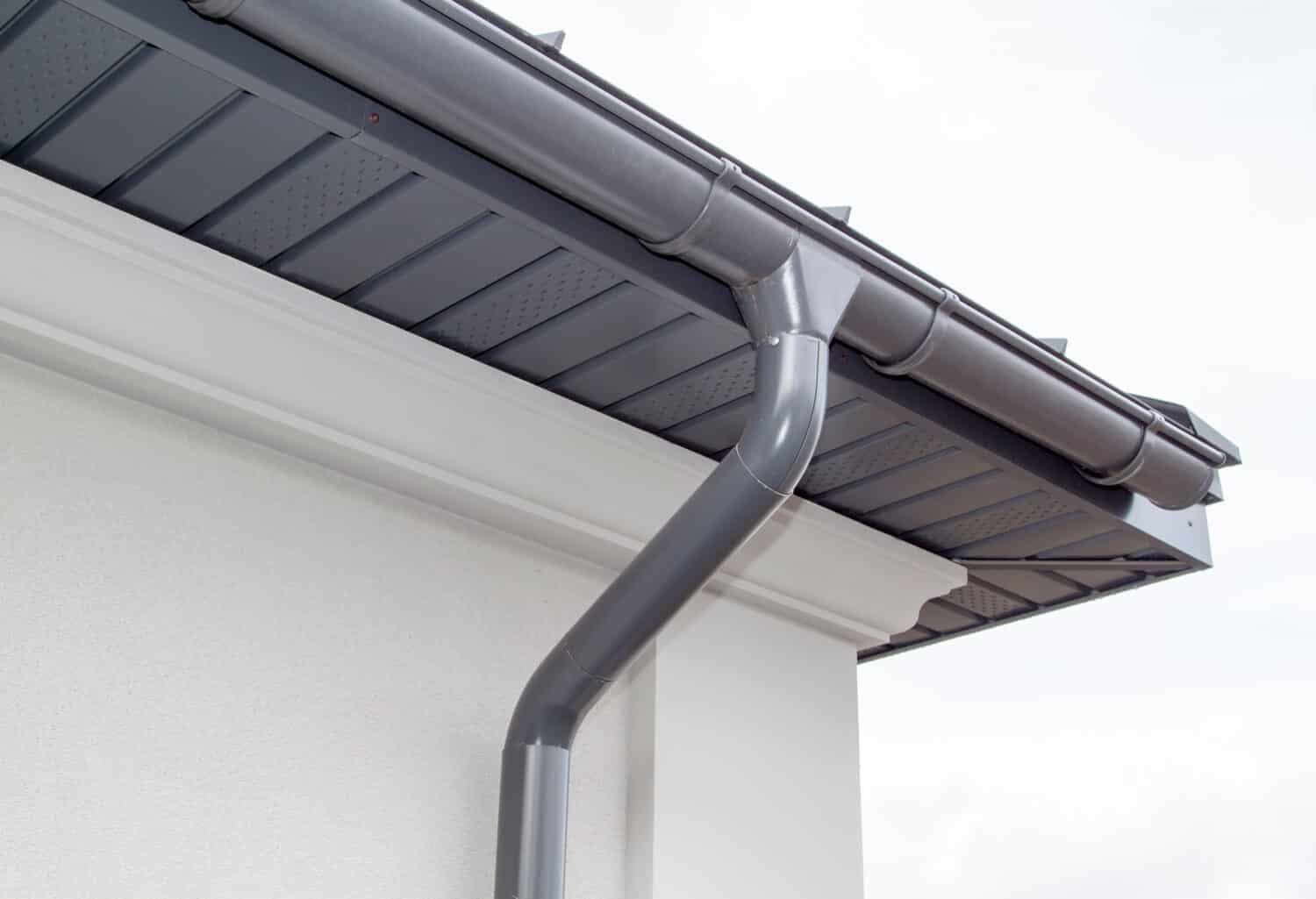
Aluminum gutters hold more water than many other types.
©sommthink/Shutterstock.com
FAQ About Copper Gutters
How Long Do Copper Gutters Last?
Copper gutters last 100 years or more with proper maintenance.
Can I Paint or Coat Copper Gutters to Change Their Appearance?
Many homeowners choose copper gutters for their natural aging process and unique patina. However, some homeowners want to prolong the patina development process as long as possible and preserve the bright, shiny finish.
It is possible to coat copper gutters, providing a protective layer that prolongs the patina development. Unfortunately, this adds a layer of maintenance and requires annual repainting.
Which Is Better: Aluminum or Copper Gutters?
It depends. The choice between aluminum and copper gutters depends on your budget, preferences, climate, and maintenance considerations. Check out a side-by-side comparison of some of the high and low points.
| Aluminum Gutters | Copper Gutters |
|---|---|
| ✓ Affordable | Expensive |
| ✘ Last 20 to 30 years | ✓ Last over 100 years |
| ✓ Easy to install | ✘ Complex installation |
| ✓ Lightweight | ✘ Heavy |
| ✓ Low-maintenance | ✘ High-maintenance |
Thank you for reading! Have some feedback for us? Contact the AZ Animals editorial team.




